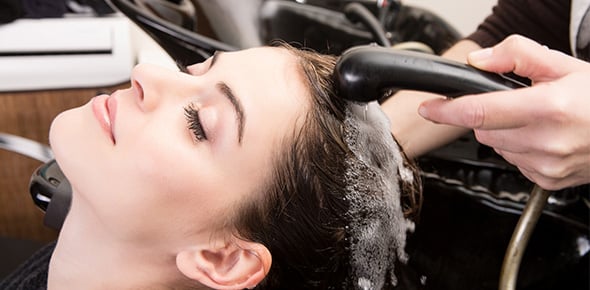Assisting clients in understanding their hair will help them improve...
The most frequently noted side effect from using chemical relaxer is
Peppermint, rosehip seed, lavender, and tea tree oil are some of the...
Slow therapeutic scalp and head massages are recommended to increase...
During the hair growth cycle, people can lose ______ hairs a day...
The widest area of the head, usually starting at the temples and...
When hair loss occurs, the client's_________ is impaired
Which emollient is most frequently used to base the scalp and hairline...
Specializes in the diseases and disorders of the skin, hair, and...
Hair loss occurs more often in men
The general term for a variety of hair problems, abnormal hair loss,...
The temporary hair loss experienced at the end of a pregnancy
When the hair is being pulled to tight
The growing phase of the hair life cycle
The shedding phase of the hair life cycle
Gray hair or ______ is the loss of natural pigment or melanin in the...
Hair disease or disorder where graying of the hair exists at or before...
_____ is a topical medication that is put on the scalp twice a day and...
The lower the number on the pH scale, the more _____________
____ are small white pimples that seep pus
The outermost layer of the scalp
Dandruff can be caused by the following internal factors
___ is the accumulation of large, visible clumps of scales on the...
A condition of the hair follicle when long, thick, and pigmented hair...
_______is a skin condition caused by an inflammation of the sebaceous...
_____ is an oral prescription medication for men only. Is known to...
All body hair loss
When overgrowth of fungal yeast or _______, occurs dandruff will...
____ is a thick scar resulting from excessive growth of fibrous tissue
Dandruff can be caused by the following external factors
Hair disease or disorder where graying of the hair is due to the aging...
____ or ringworm of the scalp
Many commercial dandruff shampoos contain____ solutions that...
Most common scalp disorder that a natural hair stylist can recommend...
The average life cycle of a hair strand is estimated at __to___...
Hair disease or disorder where the hair condition is also known has...
To kill head lice you can advise to your client to apply _____ or...
Known as male pattern baldness
The technical term for split hair ends
A rare form of alopecia areata, primarily affect young females, where...
_____ honeycomb ringworm characterized by dry sulfur yellow cuplike...
Sudden hair loss in patches or spots
Two basic types of chemical straighteners
A dry, brittle condition of the hair that includes formation of...
The resting phase of the hair life cycle
____ occurs when the body identifies an area of the scalp as the enemy...
The optimum neutral pH level for hair is
Hair disease or disorder where there is an abnormal development of...
The infestation of hair and scalp with head lice
Technical term for beaded hair; hair breaks between beads and nodes
Sodium hydroxide relaxers range from about ____ to ____ on the pH...
___is considered the more severe dandruff type; dandruff has large...
Hair disease or disorder where the hair is brittle or split ends; hair...
Starts with small round patches of hair loss and progresses to total...
Permanent hair loss can occur if the hair's_______is totally...
The small root area at the base of the hair, which receives the...
Two-step process, natural hair texture is removed or chemically...
____ is a destructive scarring folliculitis that occurs almost...
















